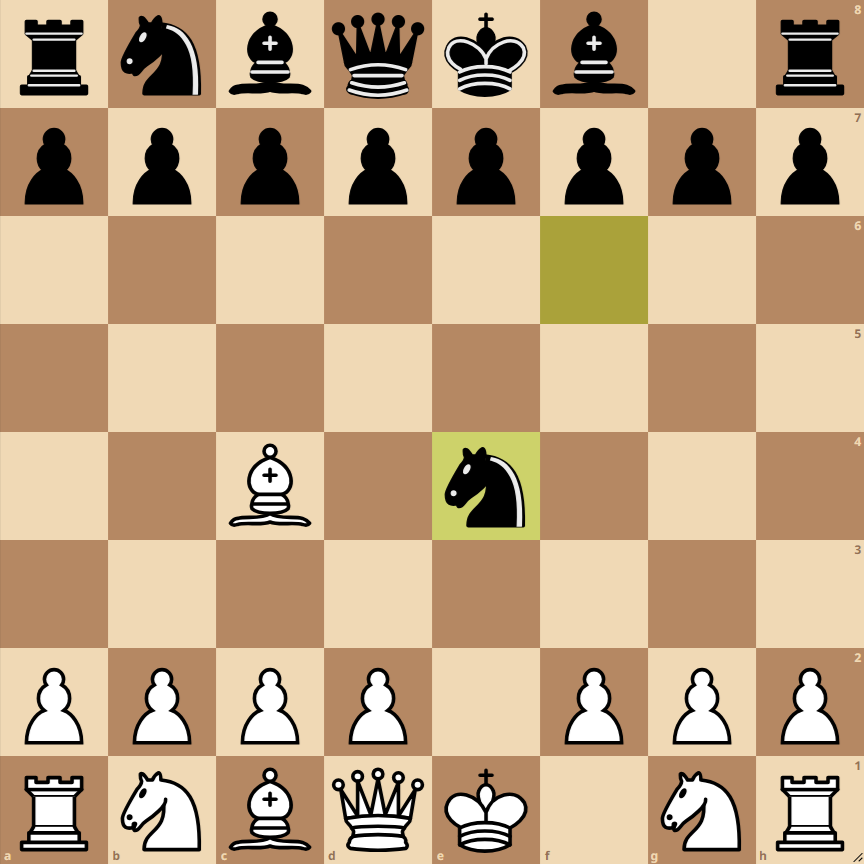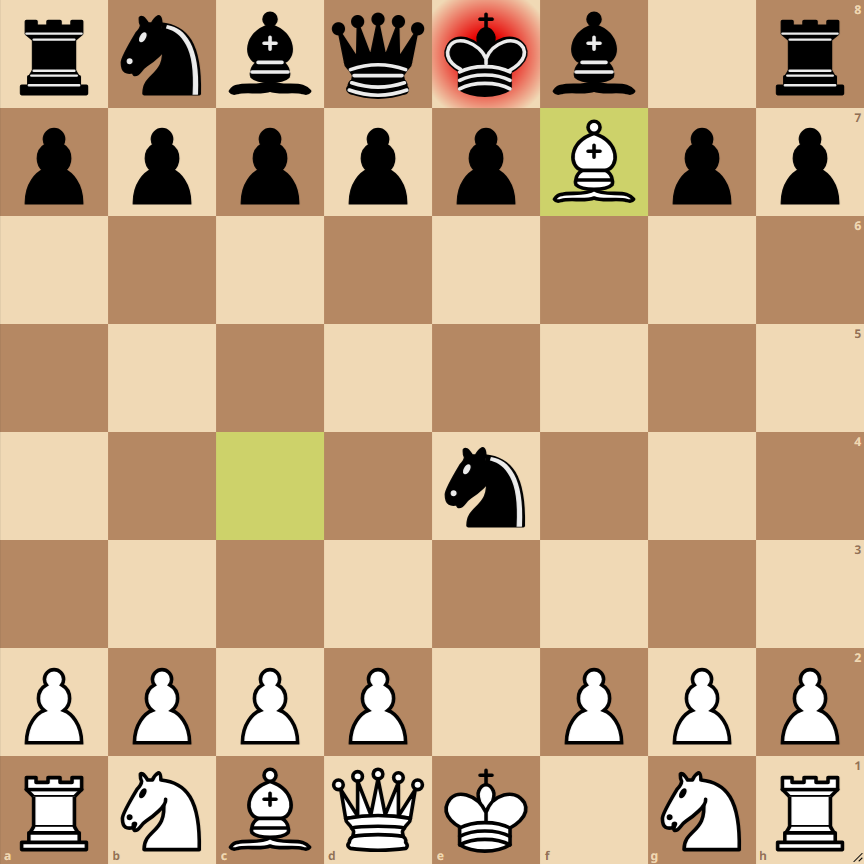How to Play the Opening: Alekhine Defense: Krejcik Gambit Variation


- 1. e4: White starts with the move pawn to e4, controlling the center and preparing piece development.
- 1… Nf6: Black responds with the knight to f6, attacking the e4 pawn and signaling the Alekhine Defense, aiming to provoke and weaken White’s pawn structure.
- 2. Nc4: White develops the bishop to c4, indirectly threatening the weak f7 point in the black camp and preparing for a possible kingside castling.
- 2… Nxe4: Black captures the e4 pawn, accepting the challenge and seeking to benefit from the central pawn.
- 3. Bxf7+: White sacrifices the bishop on f7, a typical move in the Krejcik Gambit, aiming to unbalance the black king and gain an advantage in development and attack.
Opening Variations: Alekhine Defense: Krejcik Gambit Variation
1… d6
An alternative for Black is to play 1…d6, aiming to control the center without immediately committing the knight.
2… e5
After 2. Bc4, Black can choose 2…e5, strengthening the center and preparing the development of the bishop and queen.
3. d3
Instead of sacrificing the bishop with 3. Bxf7+, White can play 3. d3, aiming to recapture the pawn and maintain a solid structure.

